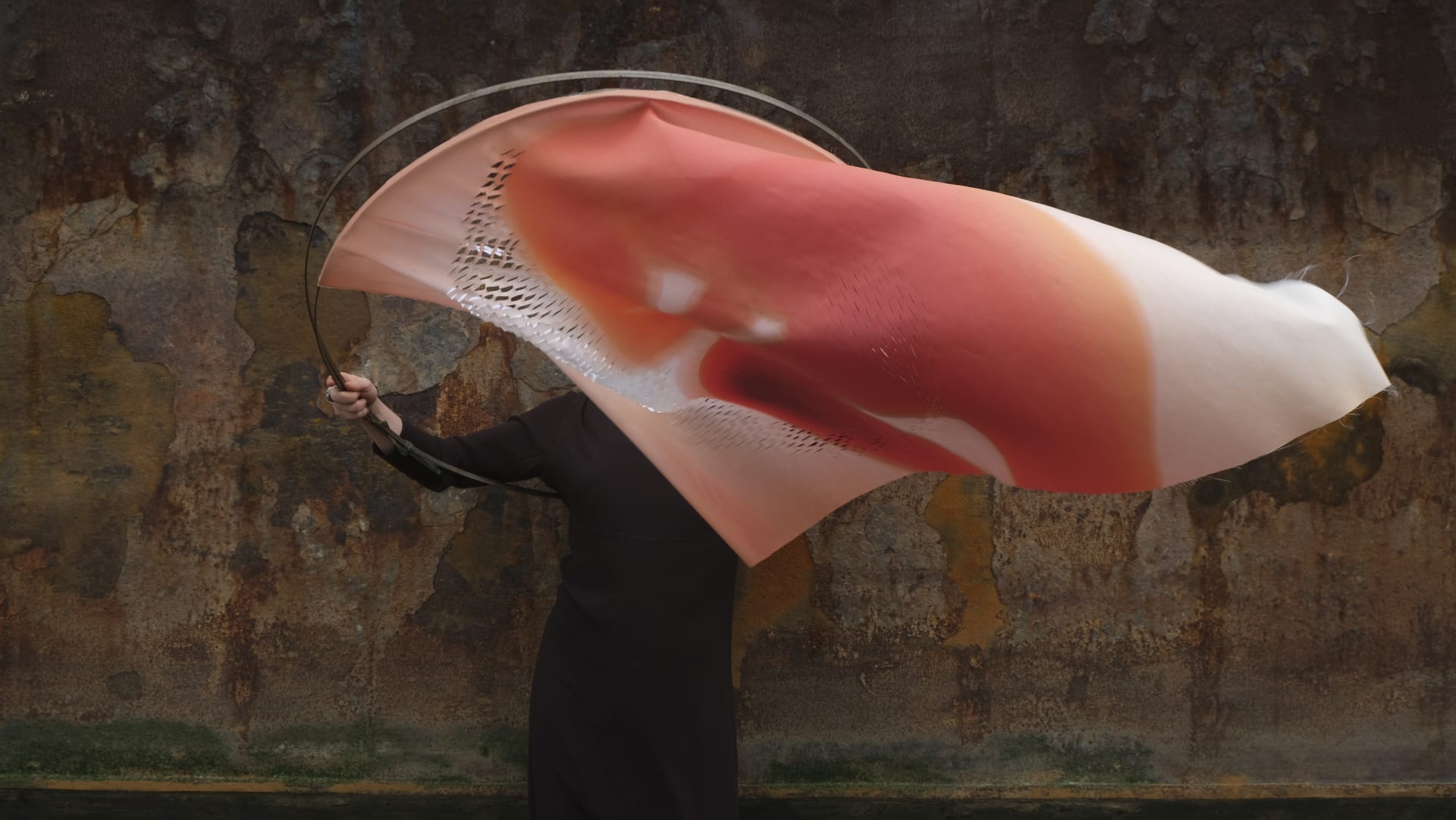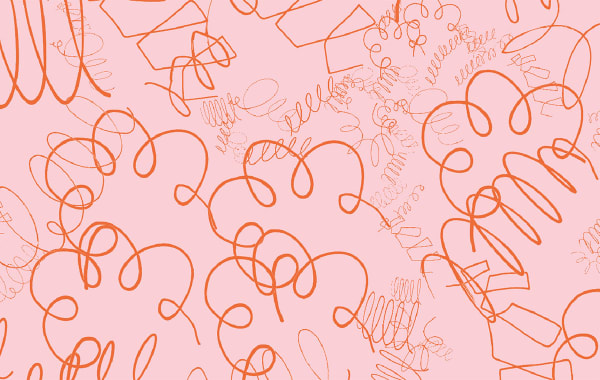On Central Saint Martins: URL you'll find colour and connection. Here, the curator of the collection Rebecca Hoyes introduces a few of those works, from co-designing with bacteria to performance that explores minerals and pigments through textiles.
It is not news that the colouration of textiles and materials has destructive and irreversible effects on our environment. This year’s graduates demonstrate a life-affirming, emotional and material connectedness to the ecosystems of our natural world. Working with nature rather than against it – celebrating nature as co-designer and muse.
-
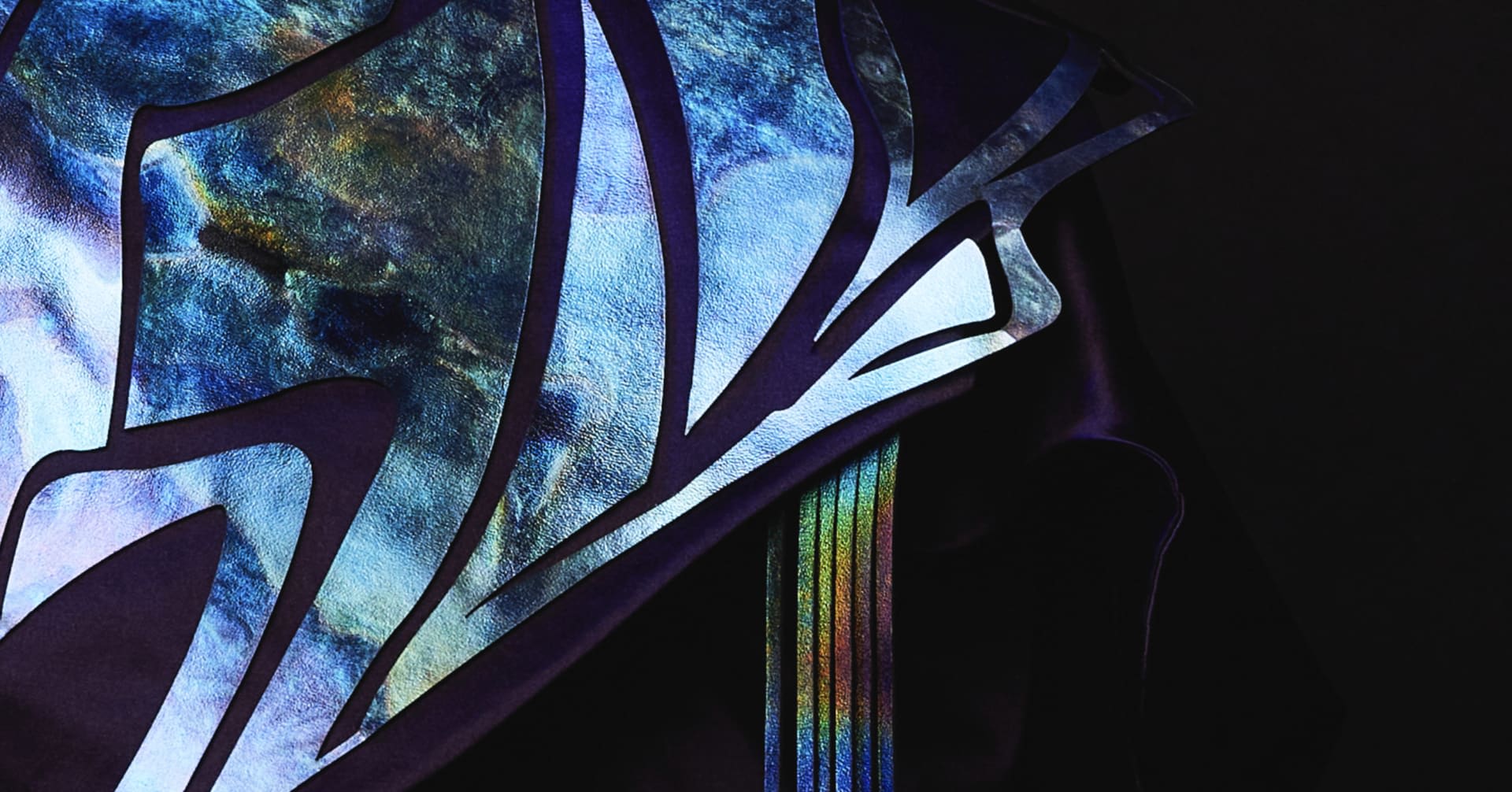
Célina Camboni, MA Biodesign
-
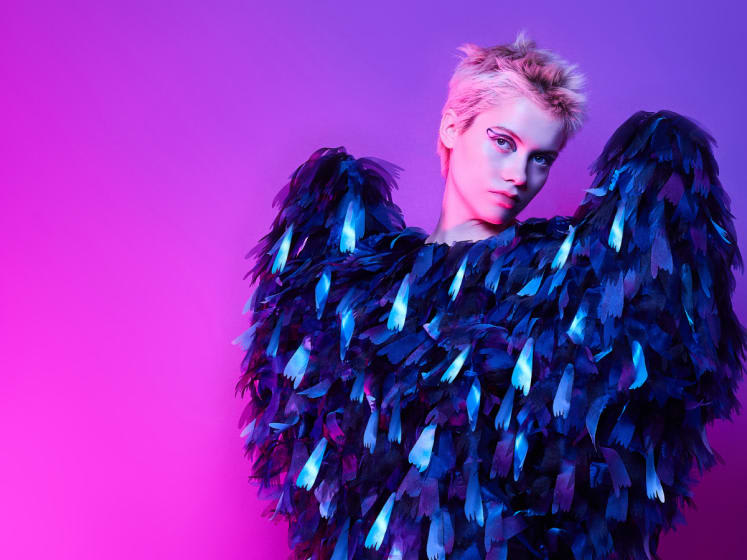
Célina Camboni, MA Biodesign
Célina Camboni, MA Biodesign
Emotional Iridescence: A Living Colour is a biocouture research project demonstrating the development of a bio-based iridescent coating. Made from more than 95% natural and renewable materials, the innovative bio-iridescent film mimics the natural phenomenon of iridescence in nature. This bio-iridescent film is applied to deadstock recycled fabrics and materials, offering new opportunities towards the advocation of greener alternatives for the fashion industry.
Entity
Ela Mete
Ela Mete, BA Textile Design
"As It Is explores how reality might shift if pre-fixed judgements and assumptions; the veil in front of our eyes are lifted. Then we may be able to see the unique nature of each moment and don’t take reality for granted.
The reality in which a rock moves in stillness, a plant turns her head around each day. The reality which is surreal, abnormal, imperfect, beyond logic and all natural.
The performer creates its own world and truth, free from the obligations of what is acceptable in everyday life.
The stage, a space seemingly unreal, holds the freedom of being real; with no obligation to fit in.
Our separateness from nature is delusional.
The performer is an ever-changing, delphic, uncanny entity.
Just like everything else,
Performing,
As it is.
To explore this concept, I created a series of performing textile pieces where the textile becomes the performer, moving and changing whilst building a relationship with the body. Each performance will show a different visual as the abstract print moves with the performers body, narrating the ever-changing and unique order of life. The process starts from collecting earth, rocks, brick and cement. Observing natural and manmade objects, their shapes and formation. Later, I start rubbing them on paper connecting with their textures and witnessing their imprints. Then I crush them down into pigments, extracting colour from them.
I work with materials to better understand all parts of myself. I aim to find connection with my body and everything else in the world through the process of creating and deepening my relationship with natural materials."
Moving Pigment
Charlotte Werth
Charlotte Werth, MA Material Futures
"Moving Pigment scales up and automates the process of co-designing textile patterns with pigment-producing bacteria. It intends to enlarge and make visible a reality that is usually hidden from sight, showing us the incredible beauty of this parallel microscopic world.
The high degree of uniformity demanded in the context of mass production and consumer capitalism has led to extensive usage of petrochemical dyes. These often have disastrous impacts on ecosystems through the pollution of water courses and landscapes. In contrast, bacteria dye has many environmentally friendly advantages, including far lower water-usage and no use of harmful chemicals. Placing this method within the industry’s context is desirable and necessary to provide an alternative to the destructive status quo.
Bacteria dyeing is a rather beautiful and unique method of dyeing, creating colour-gradients and lines when guided, which cannot be imitated easily. Nevertheless, the microbes grow in slightly unexpected ways and thus take part in the design-process. Through centring living organisms as an integral part of a collaborative production process, the outcome can be explicitly designed but never foreseen precisely. Co-designing and co-producing with microorganisms means understanding their way of growing and applying that when generating patterns. The aim of this work is to explore the possibility of reproducing this predictably unpredictable practice on a larger scale.
Challenging the established separation of human and non-human species can create meaningful innovation. Designing with and not against nature necessitates alternative practices and new instruments. The machine developed within this work is designed to experiment and explore the process of bacteria dyeing through automation. It represents a case study for the prospective large scale implementation of sustainable co-designing dye practices."
-
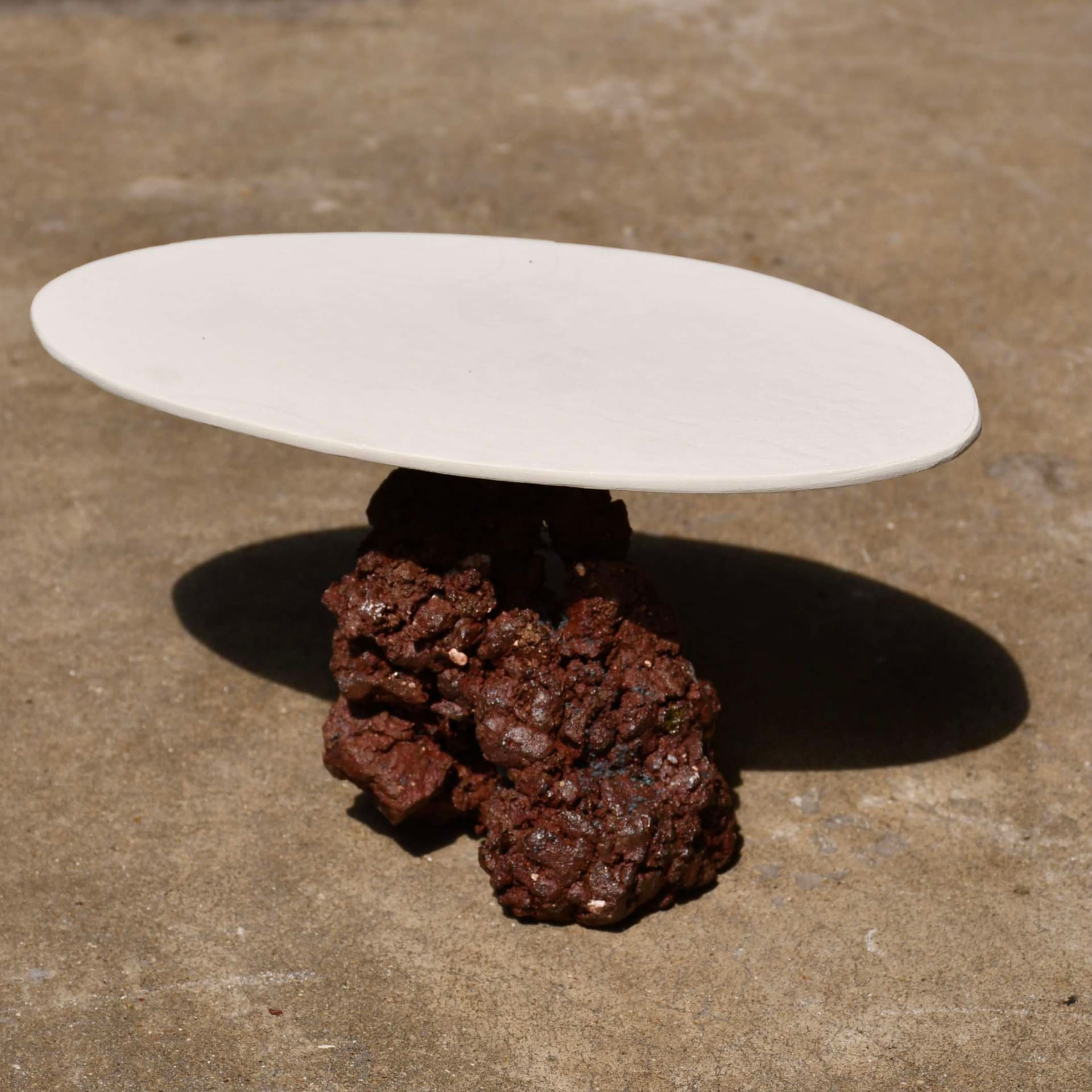
Victoria Coxall, BA Ceramic Design
-
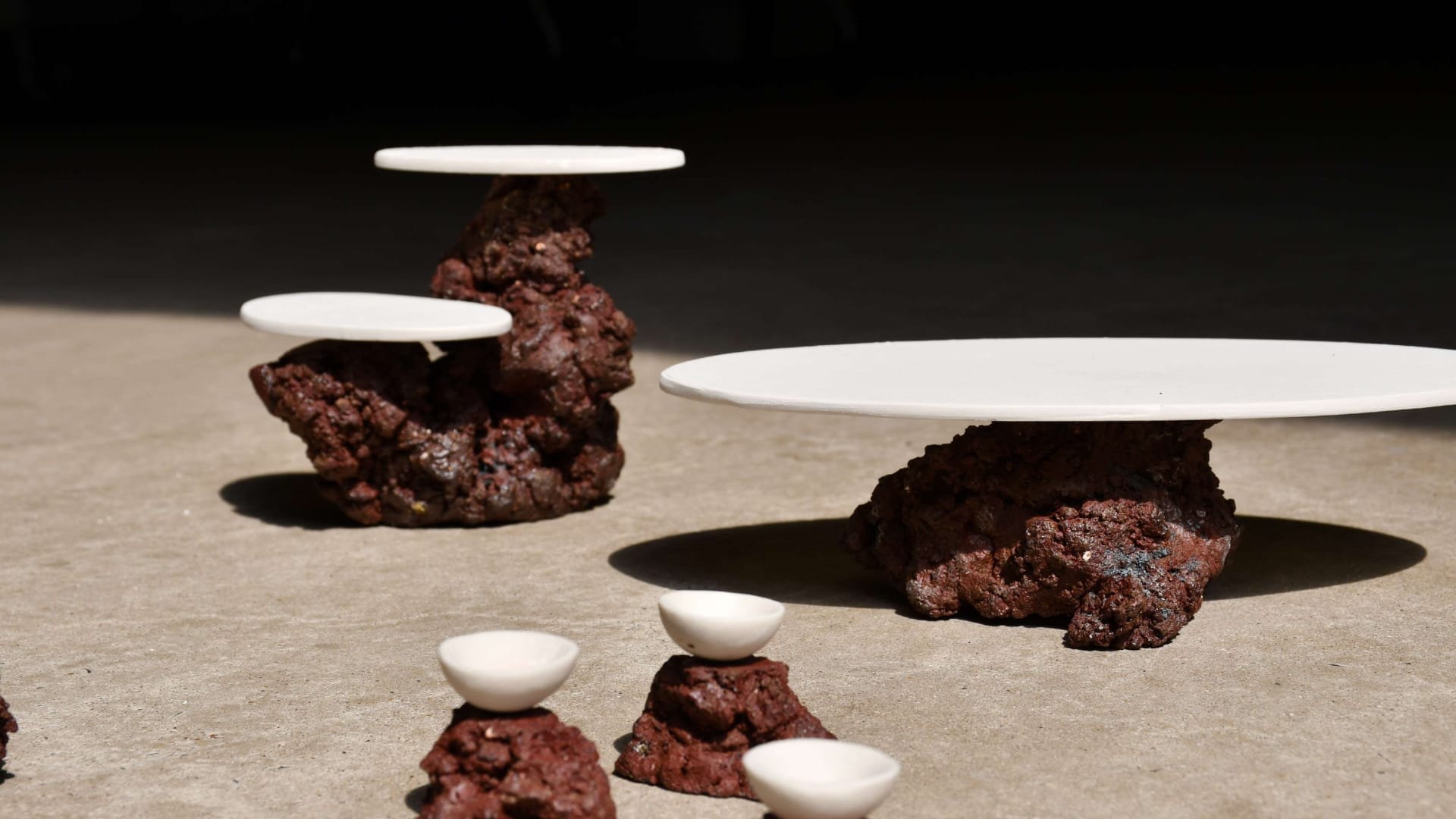
Victoria Coxall, BA Ceramic Design
Victoria Coxall, BA Ceramic Design
Slow Ceramic is founded on the idea of conscious practice and being mindful of the planet and its inhabitants.
"It bonds the fundamental ethos of slow living, the basic principles of the circular economy, and the three pillars of sustainability. It incentivises a sense of belonging, community and emotional relationship between ourselves and the environment. At the core of its philosophy, stands the idea of awareness, challenging us to rethink ideas of possession and objects for life.
Slow Ceramic is a way of living and perceiving the world, an act of responsibility against the socially and ecologically unethical structure of our economic system."
Explore the entire Conscious Colour collection.
Rebecca Hoyes is an Associate Lecturer on the Jewellery, Textiles and Materials programme at Central Saint Martins and co-founder of Colour-Matter, a colour and materials research studio.
